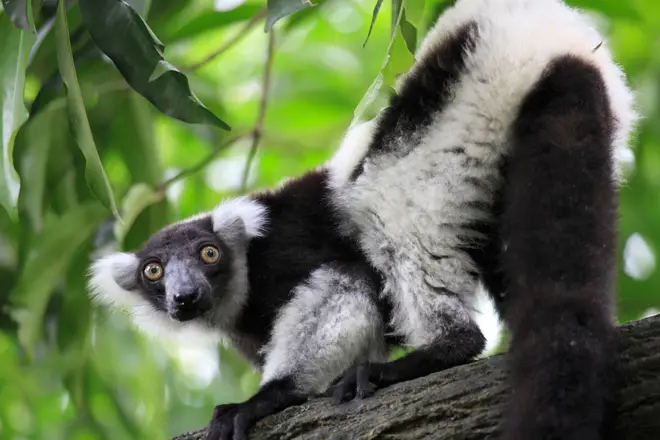On Air Now
Early Breakfast with Lucy Coward 4am - 6:30am
4 November 2021, 12:08

Research has revealed the primates can even sing in a rhythm similar to ‘We Will Rock You’.
On the island of Madagascar, the musical calls and howls of the native lemurs contribute to the bustling natural chorus.
And now new research has revealed that one of the world’s largest lemurs, the indri, actually shares similar musical traits to us humans.
The 12-year study found the primates’ distinctive songs, which can last as long as three minutes, actually have categorical rhythm (1:1 or 1:2 rhythm).
“This is the first evidence of a ‘rhythmic universal’ in a non-human mammal,” Dr. Chiara de Gregorio, from the Life Sciences and Systems Biology department at the University of Turin, explained.
Read more: Medieval illustrations of psychedelic animals playing music raise many questions

The research was conducted to investigate how rhythm capacities originated in humans, with 636 recordings of vocalisations from 39 lemurs analysed.
As well as showing classic rhythmic categories, researchers also found a ‘ritardando’ in their songs too. Male and female vocalisations had a different tempo, but still had the same rhythm.
Describing the sound of their songs, Alanna Marron, lead educational technician at the Duke Lemur Center, told USA Today: “It’s incredibly beautiful and haunting.”
So why were these large wet-nosed primates specifically chosen for the experiment?
“In the primate family tree they’re on the exact opposite end from us,” Marron explained.
She added: “In studying lemurs and studying primate evolution, that allows us to look at the history of primates and how we evolved.”